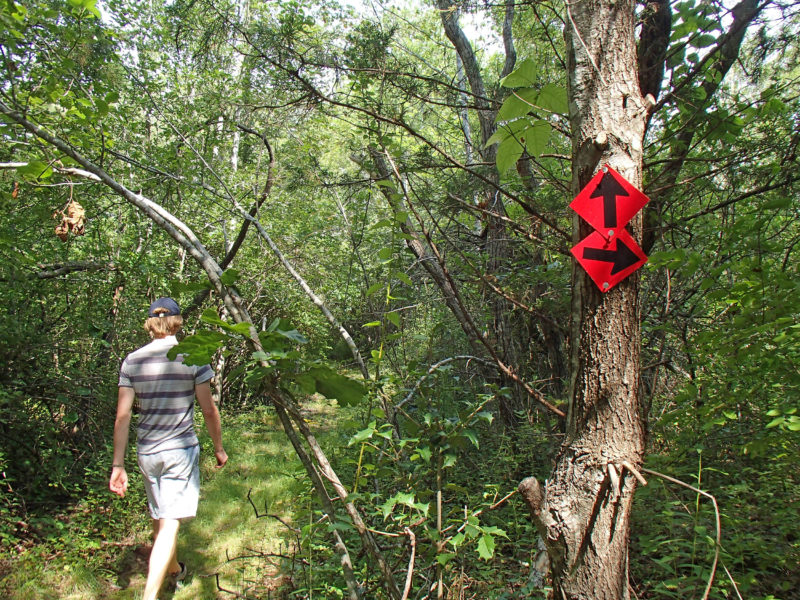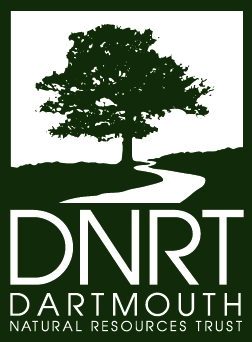Star of the Sea Reserve
Nestled between town-owned conservation land and the waters of inner Apponagansett Bay, Star of the Sea Reserve shines as a quiet place to explore forests and coastal wetlands. This Dartmouth Natural Resources Trust property has a network of easy trails through the woods that lead to a fascinating old stone bridge across the salt marsh.
Features

The trails at Star of the Sea Reserve are clearly marked with red and blue blazes, making for an easy nature walk.
Once a sand and gravel mining area, Star of the Sea Reserve today is an intimate wooded preserve located down a private residential road. The trails here are open to the public to explore this small slice of Dartmouth’s coastal habitats. It’s an easy, uncrowded place to walk with small children or an outdoors-loving dog. At the trail’s end, you’ll be rewarded with a scenic view of Apponagansett Bay from an old stone causeway and bridge.
Trails
The trail network at Star of the Sea Reserve loops for roughly 1.25 miles through the woods and into the neighboring 60-acre town-owned conservation land. This peaceful, interesting walk that will take you under an hour to explore. (Download trail map)
Begin on the red trail, which is clearly marked by boulders on the road. After starting down the path, take a right to walk the longer loop, or go left to head toward the blue trail. This trail can be very wet in spring, but a boardwalk crosses the wettest section to keep your feet dry.
From the red trail, turn right onto the blue trail, which circles through the town-owned property. As you walk, you’ll see how the upland forest gives way to forested wetlands as you get closer to the coastline. (Hunting, shooting, and trapping are permitted on the town property, so make sure to stay on the marked trails and wear blaze orange during hunting season.)
The blue trail – which follows an old bridle path – crosses over a few small stone bridges before coming to a fork. Take a right at the fork, and you’ll find the old stone causeway and bridge (accessible only at low tide) with a beautiful view of the Apponagansett Bay salt marsh.
Habitats & Wildlife
Star of the Sea Reserve and the adjoining town-owned conservation land showcase the gentle transition of the land as it reaches the coast: from forested upland habitats to wet wooded wetlands to salt marshes along the shore.
You can see this natural habitat transition in the plants and animals on your walk. Look for birch and scrubby oaks growing in dry, sandy soils, while rushes and Joe Pye weed sprout in wetter areas. Keep an eye out for frogs, salamanders, and turtles in the wetlands and around the pond. Meanwhile, over at the old stone causeway, fiddler crabs scurry through the marsh and ospreys soar overhead in summer.

 Download Property Map
Download Property Map